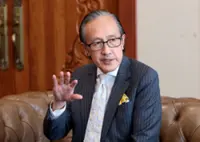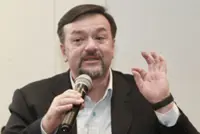PETALING JAYA: An overall increase in allocation in healthcare for the upcoming Budget 2025 is required to reform and improve the public healthcare system, says the Malaysian Medical Association (MMA).
In a statement on Tuesday (Sept 24), the MMA said that the increasing of the health budget to 5% of GDP should be achieved as soon as possible as over 70% of Malaysians rely on public healthcare services.
The association also listed several proposals for the upcoming budget in its full statement below.
Improving public sector service is the main thrust of MMA's 2025 Health Budget wishlist.
MMA proposes creating KUP Gred Khas C posts to free up the bottleneck of UD56 specialists stagnating in the system, increase in on-call rates for all public healthcare doctors including specialists and various incentives to encourage Malaysians to adopt a healthy lifestyle.
The Malaysian Medical Association (MMA) feels an overall increase in the health budget is needed to allow for more meaningful improvements and reforms in the healthcare system.
The Health White Paper (HWP) tabled in parliament last year called for an increase in the health budget in phases to reach 5% of the nation’s GDP. However, it is hoped that a definitive time frame will be given to achieve this target with clear milestones set in Budget 2025. We are pleased that in Budget 2024, the health budget was given the highest increase in percentage since 2014 but we should be aiming to achieve the target of 5% of the GDP earlier rather than later.
As more than 70% of Malaysians rely on public healthcare services for their healthcare needs, urgent steps need to be taken to retain the services of healthcare workers in the system by improving their work-life balance, their benefits and improving overall efficiency in services. The brain drain and resignations of both junior and senior doctors occurring at an alarming rate need to be addressed.
Some of the proposals MMA is putting forward for the public healthcare sector are as below:-
1) As creating more new positions within the system may be a challenge, we ask that the government look into creating Khas Untuk Penyandang (KUP) Gred Khas C posts for specialists who have been stagnating at the UD56 scale. There are a few hundred doctors in this category across all specialisations. Up to 100 are senior doctors who got their UD56 in 2017 and have since been stagnating at this scale. The last such promotion exercise was in 2012 when a few hundred KUP khas C posts were specially created and this had enabled many doctors to move up to Gred Khas C. After 13 years, another one-off creation of KUP Khas C is very much required to help retain our experienced senior doctors who are needed to treat, teach and mentor in the public sector. This creation of up to 150 to 200 KUP Gred Khas C posts will go a long way in reducing resignations and clearing the bottleneck we have now and especially so for those on the UD 56 scale since the year 2017.
2) We also look forward to the announcement of the new on-call rates which is expected to be included as part of Budget 2025. We hope the government will accept MMA’s proposal of increasing the hourly active on-call rate for medical officers to RM25 an hour (from the current rate of RM9.16 an hour for weekend active calls).
Similarly, we hope that the government will also increase the specialists’ hourly active on-call allowance rate to RM30 an hour (from the existing RM10.40 an hour for active weekend calls).
As for passive calls for both medical officers and specialists, MMA proposes an increase of 50% from the existing rates.
This increase is only apt for the sacrifices the healthcare workers make in providing medical services 24 hours a day, 7 days a week to all their patients. It is important to note that the last change to the rates was in 2012.
3) MMA has strongly supported the Government's recent amendment of the Medical Act to facilitate specialist training. It is vital that doctors be given the freedom to choose the training pathway they wish to pursue. This is the only way to retain our medical officers in the system and encourage them to specialise. As such the budget for specialist training must be increased and not be a limiting factor to restrict training opportunities for the young doctors in any pathway they choose. Training under the Masters programmes and parallel pathways must be given equal attention to meet the growing demand for specialists in the country.
4) Increasingly, clinicians are required to take on administrative responsibilities, such as managing clinics and hospitals, keeping up with the newly established Key Performance Indicators (KPIs), and handling other managerial duties.
To better equip these healthcare professionals, a dedicated budget should be set aside for management training. This would ensure doctors have the necessary skills to effectively manage hospital administration alongside their clinical duties.
5)For permanent positions, the government should look into posts with EPF as an alternative to the pension scheme if cost is a factor. Job security is essential for young doctors who are leaving in growing numbers. Contract doctor positions should not be continued as it has clearly shown over the past few years, to be a major cause of career uncertainty and resignations from the public sector.
6) To increase efficiency in the administration of public healthcare facilities and to address the issue of overcrowding, the MMA proposes an increase in allocation for digitalisation in public healthcare. We hope the MOH will adopt the MMA’s proposal to digitalise the healthcare system for more efficient and effective planning of healthcare human resources, administration and management of appointments in real-time. The MMA had also proposed an online dashboard listing the services, and number of appointments available; to guide and assist the public in planning their visits to a public healthcare facility.
For the private healthcare sector:
1)We hope to see an increase in public-private collaborations particularly in the prevention and management of NCDs. According to the National Health and Morbidity Survey 2023, over half a million or 2.5 per cent of Malaysian adults live with 4 NCDs: Diabetes, Hypertension, High Cholesterol and Obesity. Almost 2.3 million Malaysian adults live with 3 NCDs.
The 13,000 private GPs who play an important role in prevention and health education are still under-utilised in addressing NCDs.
A public-private collaboration with the wide distribution of private GPs can significantly improve effectiveness in the management of NCDs. However, the quantum allocated for this purpose must be sufficient to allow GPs to manage cases based on evidence-based medicine. The types of medicines and treatments should not be restricted to a given list and limited budget. All patients deserve the best care.
2) Tax rebates should be given for upscaling knowledge. With healthcare and technology improving at a much more rapid pace than ever before, specialists and GPs (including those in public service) have to continually attend courses to update themselves on the most up-to-date evidence-based approaches in healthcare. To support this professional development, especially for the improvement in primary care services, tax rebates should be given to the doctors participating and attending courses or conferences organised by professional bodies.
Supporting Malaysians adopting a healthy lifestyle:
As for the public, to address the worrying rise in cases of NCDs, better tax incentives should be provided to encourage more Malaysians to adopt a healthy lifestyle.
Tax rebates for gym memberships, rental of sports facilities, purchase of sports equipment including smart watches to monitor health parameters should be looked into.
Corporate organisations should also be given tax incentives for promoting a healthy lifestyle through sports and recreational activities such as sports clubs, sponsorship of sports events and in-house (office) gymnasiums.
The MMA also looks forward to the new Sugar-Sweetened Beverage (SSB) tax to be introduced in Budget 2025. We fully support this initiative as part of the MOH’s “War on Sugar” and look forward to further details. Along with this initiative, we would like to see tax revenue from the sale of tobacco and alcohol products channelled to the health budget specifically for programmes to prevent and treat NCDs at public healthcare facilities.
As part of holistic management of NCDs, programmes are needed to educate the public on the importance of embracing a healthy lifestyle. We hope to see allocations for this vital area in prevention with more effective awareness campaigns.
The increasing reports on cases of cardiac arrest in the population is also a concern that needs to be addressed with improved availability and access to Automated External Defibrillator
(AED) machines. We propose that a budget be set aside to purchase AED machines for all government offices and public places. Corporate organisations and privately owned gymnasiums as well as sports centres should be given tax relief for purchasing this life-saving equipment. Companies investing in cardiopulmonary resuscitation (CPR) training for their employees should also be given tax relief.
Datuk Dr Kalwinder Singh Khaira
Malaysian Medical Association president






